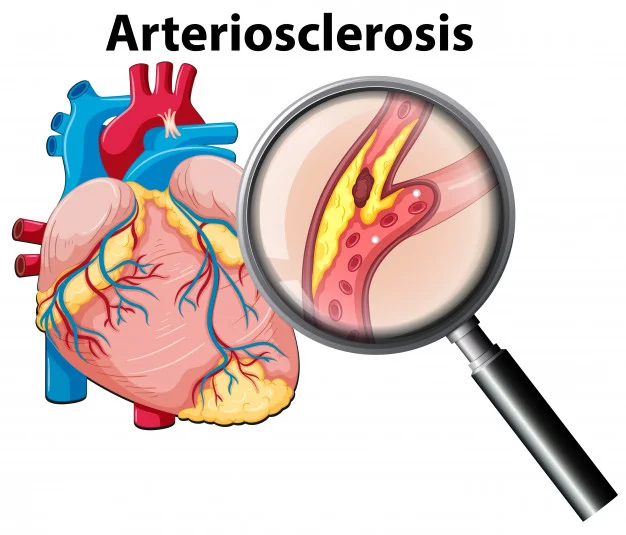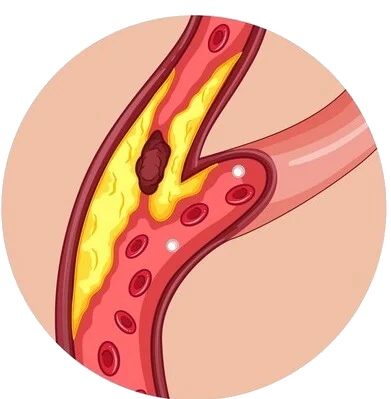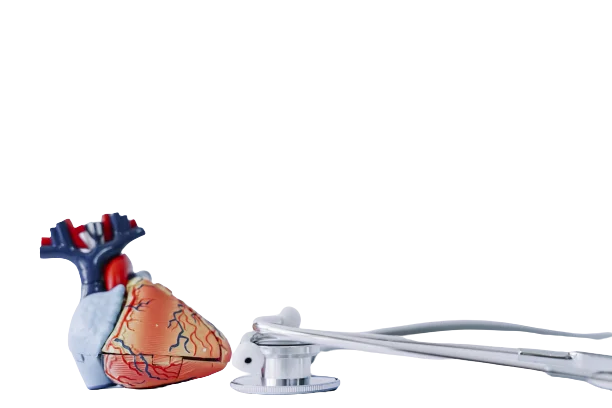Book Your Appointment
Arteriosclerosis
Disease
Get Solution At Swasthyam Superspeciality Hospital
Arteriosclerosis Disease
Arteriosclerosis Disease occurs when the blood vessels that carry oxygen and nutrients from your heart to the rest of your body (arteries) become thick and stiff — sometimes restricting blood flow to your organs and tissues. Healthy arteries are flexible and elastic, but over time, the walls in your arteries can harden, a condition commonly called hardening of the arteries.
Atherosclerosis is a specific type of arteriosclerosis, but the terms are sometimes used interchangeably. Atherosclerosis refers to the buildup of fats, cholesterol and other substances in and on your artery walls (plaque), which can restrict blood flow.
The plaque can burst, triggering a blood clot. Although atherosclerosis is often considered a heart problem, it can affect arteries anywhere in your body. Atherosclerosis may be preventable and is treatable.

Symptoms?
Atherosclerosis develops gradually. Mild atherosclerosis usually doesn’t have any symptoms.
You usually won’t have atherosclerosis symptoms until an artery is so narrowed or clogged that it can’t supply adequate blood to your organs and tissues. Sometimes a blood clot completely blocks blood flow, or even breaks apart and can trigger a heart attack or stroke.
Symptoms of moderate to severe atherosclerosis depend on which arteries are affected. For example:
- If you have atherosclerosis in your heart arteries, you may have symptoms, such as chest pain or pressure (angina).
- If you have atherosclerosis in the arteries leading to your brain, you may have signs and symptoms such as sudden numbness or weakness in your arms or legs, difficulty speaking or slurred speech, temporary loss of vision in one eye, or drooping muscles in your face. These signal a transient ischemic attack (TIA), which, if left untreated, may progress to a stroke.
- If you have atherosclerosis in the arteries in your arms and legs, you may have symptoms of peripheral artery disease, such as leg pain when walking (claudication).
- If you have atherosclerosis in the arteries leading to your kidneys, you develop high blood pressure or kidney failure.
Causes
Atherosclerosis is a slow, progressive disease that may begin as early as childhood. Although the exact cause is unknown, atherosclerosis may start with damage or injury to the inner layer of an artery. The damage may be caused by:
- High blood pressure
- High cholesterol
- High triglycerides, a type of fat (lipid) in your blood
- Smoking and other sources of tobacco
- Insulin resistance, obesity or diabetes
- Inflammation from diseases, such as arthritis, lupus or infections, or inflammation of unknown cause
Once the inner wall of an artery is damaged, blood cells and other substances often clump at the injury site and build up in the inner lining of the artery.

Causes



Atherosclerosis is a slow, progressive disease that may begin as early as childhood. Although the exact cause is unknown, atherosclerosis may start with damage or injury to the inner layer of an artery. The damage may be caused by:
- High blood pressure
- High cholesterol
- High triglycerides, a type of fat (lipid) in your blood
- Smoking and other sources of tobacco
- Insulin resistance, obesity or diabetes
- Inflammation from diseases, such as arthritis, lupus or infections, or inflammation of unknown cause
Once the inner wall of an artery is damaged, blood cells and other substances often clump at the injury site and build up in the inner lining of the artery.
Risk factors
Hardening of the arteries occurs over time. Besides aging, factors that increase the risk of atherosclerosis include:
- High blood pressure
- High cholesterol
- Diabetes
- Obesity
- Smoking and other tobacco use
- A family history of early heart disease
- Lack of exercise
- An unhealthy diet
Prevention
The same healthy lifestyle changes recommended to treat atherosclerosis also help prevent it. These include:
- Quitting smoking
- Eating healthy foods
- Exercising regularly
- Maintaining a healthy weight
-
Just remember to make changes one step at a time, and keep in mind what lifestyle changes are manageable for you in the long run.
Prevention
The same healthy lifestyle changes recommended to treat atherosclerosis also help prevent it. These include:
- Quitting smoking
- Eating healthy foods
- Exercising regularly
- Maintaining a healthy weight
-
Just remember to make changes one step at a time, and keep in mind what lifestyle changes are manageable for you in the long run.


Treatment
Lifestyle changes, such as eating a healthy diet and exercising, are the first treatment for atherosclerosis — and may be all that you need to treat your atherosclerosis. But sometimes, medication or surgical procedures may be needed.
Medications
Many different drugs are available to slow — or even reverse — the effects of atherosclerosis. Here are some medications used to treat atherosclerosis:
- Statins and other cholesterol medications: Aggressively lowering your low-density lipoprotein (LDL) cholesterol — the bad cholesterol — can slow, stop or even reverse the buildup of fatty deposits in your arteries.
- Blood thinners: Your doctor may prescribe blood-thinning medications, such as aspirin, to reduce your risk that platelets will clump in narrowed arteries, form a blood clot and cause further blockage.
- Blood pressure medications: Drugs to lower blood pressure don’t help reverse atherosclerosis but instead prevent or treat complications related to the disease.
- Other medications: Your doctor may prescribe other medications to control health conditions that raise your risk of atherosclerosis, such as diabetes.
Surgery or other procedures
Sometimes more aggressive treatment is needed to treat atherosclerosis. If you have severe symptoms or a blockage, your doctor may recommend one of the following surgical procedures:
angioplasty and stent placement: This procedure — also called percutaneous coronary intervention (PCI) — helps open a clogged or blocked artery. Your doctor inserts a catheter into the diseased artery.
Endarterectomy: Sometimes, plaque buildup must be surgically removed from the walls of a narrowed artery.
Message Us
Get In touch with us. Ask Any Question or Book Your Appointment Now
Emergency
+91-8600888444
Book An Appointment
0712-2222111
Contact Us
Location
97/98 Vivekanand Nagar, Near Sai Mandir, Wardha Road, Nagpur
Contact for
Emergency :- +91-8600888444
Book An Appointment:- 0712-2222111
For Latest Updates Follow Us On Facebook
